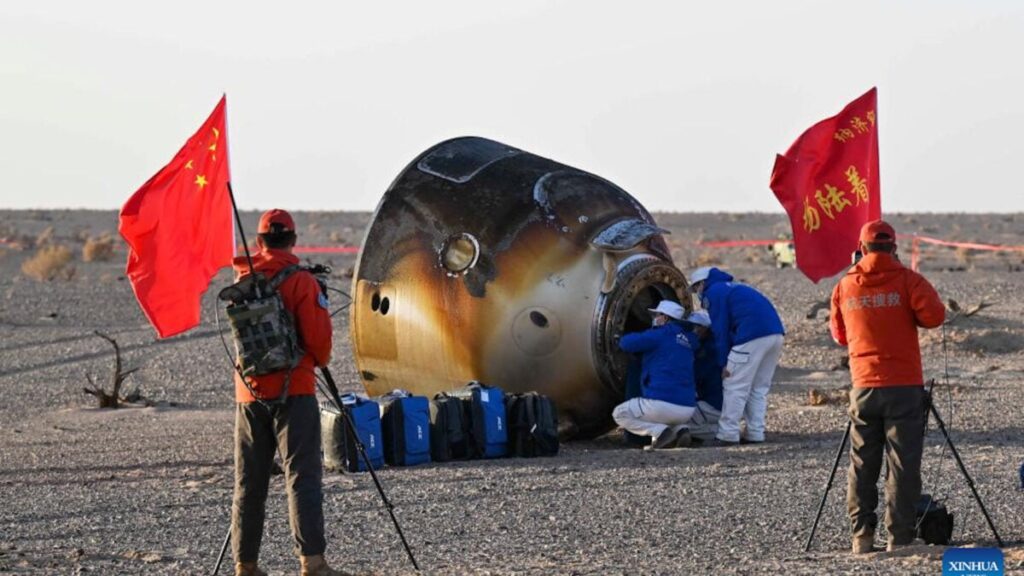Three astronauts returned to Earth on Friday after being stranded due to a rare space debris incident. The Chinese crew was transported on board a different vessel than the one they were originally assigned, leaving another three astronauts with no return spacecraft.
The Shenzhou-20 astronauts, Chen Dong, Chen Zhongrui, and Wang Jie, touched down at the Dongfeng landing site in northern China at 3:30 a.m. ET, according to Chinese media outlets. The crew was originally due to return on November 5, but their trip home was delayed by nine days after their spacecraft was damaged. China’s Shenzhou-20 spacecraft was struck by a piece of space debris while docked to the Tiangong space station, resulting in tiny cracks on the return capsule’s viewpoint window. The spacecraft was deemed unfit to carry the astronauts to Earth, forcing the crew to ride on board the Shenzhou-21 vessel.
The apparent space junk disrupted China’s otherwise seamless record of crew handovers over the past four years. Now, the Chinese space agency has to adopt an alternative return procedure for the Shenzhou-21 crew, who are due to return to Earth early next year. The crew that’s currently in space currently has no means of returning to Earth in the event of an emergency.
Ride home
China’s three-module space station, named Tiangong, or “the heavenly place,” welcomed its first crew on June 16, 2021. Although much smaller than the International Space Station (ISS), which boasts 16 modules, Tiangong is the only other space station in Earth orbit today.
The China Manned Space Agency (CMSA) aims to occupy Tiangong with at least three astronauts at a time, keeping a steady flow of crews launching to orbit for six-month stints. So far, things have gone pretty well for the Chinese space station, with crews carrying out perfectly timed handovers over the years. That was, however, until space junk struck one of its docked vessels.
The Shenzhou-21 crew launched on October 31. During a brief period of crew handover, two Shenzhou capsules are docked to the space station. With one of the capsules damaged, the departing astronauts were forced to use the current crew’s Shenzhou vessel to return home. That leaves the Shenzhou-21 astronauts, Commander Zhang Lu, Flight Engineer Wu Fei, and Payload Specialist Zhang Hongzhang, stranded in space.
China’s safety protocols include sending an uncrewed rescue spacecraft to the space station to carry the astronauts back to Earth in case of an emergency, according to Reuters. CMSA said that it would launch the Shenzhou-22 vessel to the space station at an appropriate time in the future.
Orbital junk
The incident highlights the growing risk space debris poses against ongoing orbital missions and astronaut safety. In 2023, Tiangong suffered a partial loss of power after space debris struck the solar wings attached to the core module, forcing astronauts to carry out two spacewalks to repair the damage.
At the time, CMSA stated that it would take additional precautions to mitigate the risks of space debris, including protective reinforcement for the space station’s hardware. As the amount of space debris in Earth orbit continues to increase, with an estimated 40,000 objects currently being tracked by space surveillance networks, these types of collisions may be inevitable.

